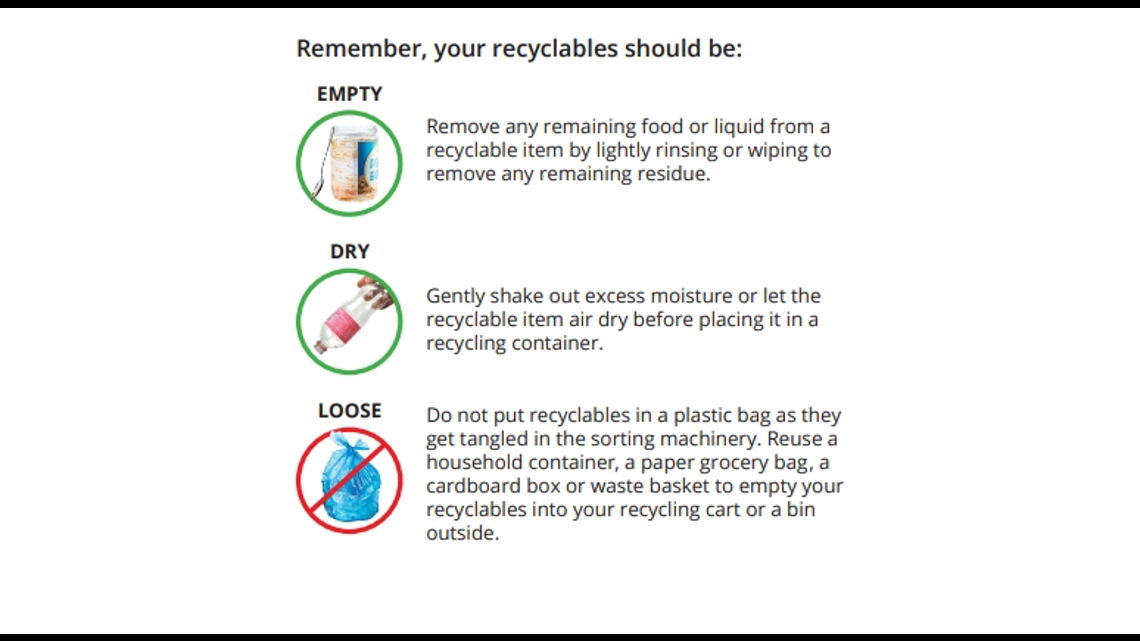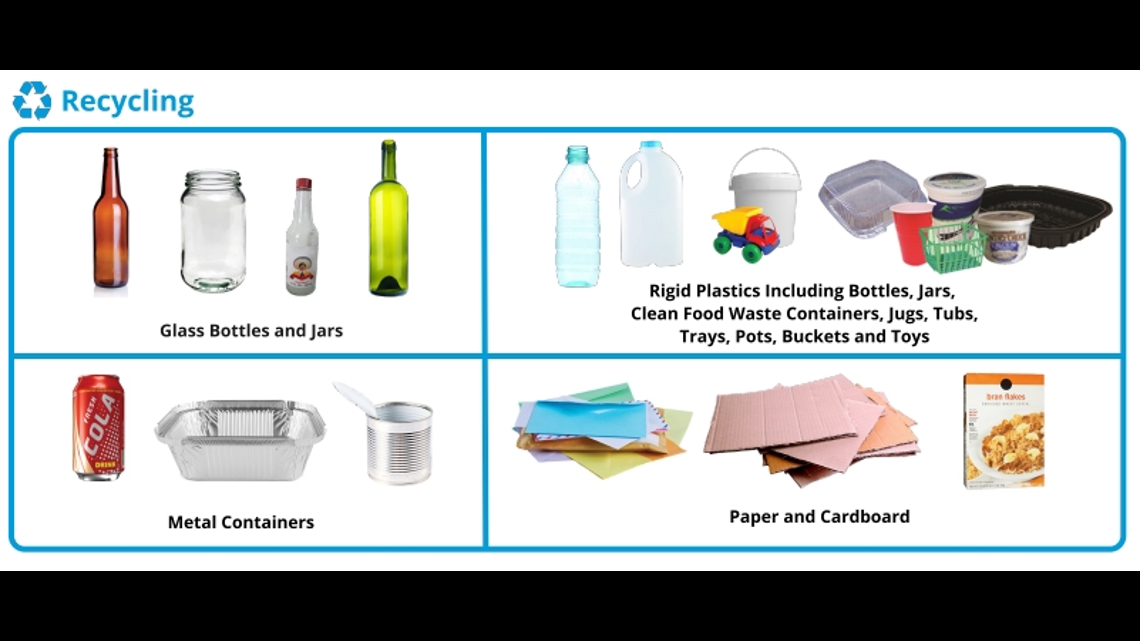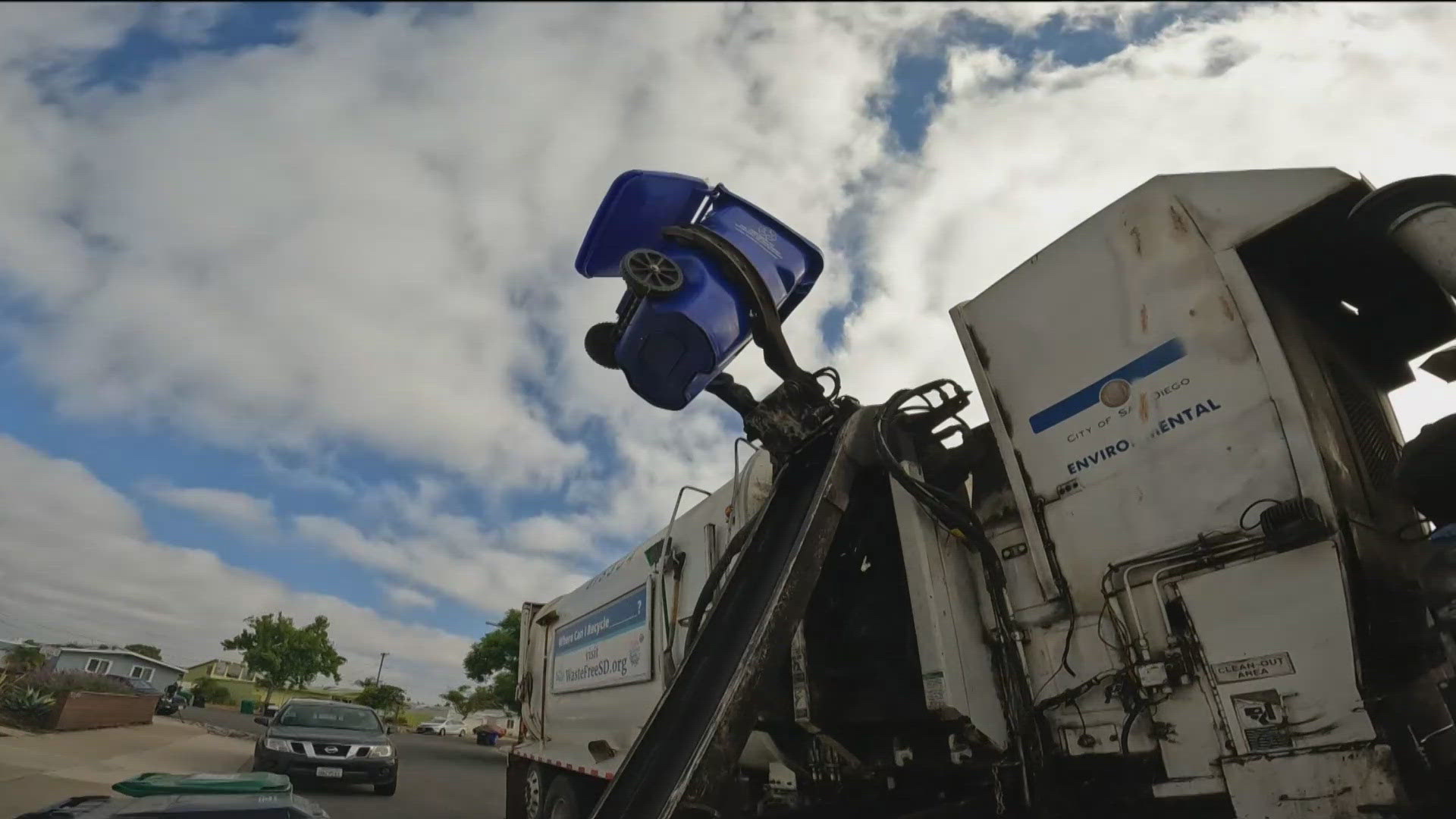SAN DIEGO — We have covered many stories about recycling in our Earth 8 reports, and each time we discover more and more. So, we decided it was time to really get into the dirty details of what happens with your trash and your recyclables.
CBS 8’s Neda Iranpour went on a ride-along with the City of San Diego’s sanitation. So, we hopped in with sanitation driver Jared Nunes who graciously answered our questions while picking up bins.
First thing, we had to know what his pet peeves are. Jared Nunes said, “when the cans are overflowing a lot of times it makes a mess. We try to do our best to grab it, but sometimes it makes a mess we got to get out and clean it up.”
So be sure the lid closes. If not, your trash and recyclables could go flying and someone like Nunes will have to try to chase it all down.
“We got around 2,000 stops a day, and when it’s already out ready for us to grab makes it easier, makes everything go smoother," he said.
When Nunes’s truck gets full, he brings it to Allen Company Recycling Center. This is one of the recycling centers the City of San Diego relies on to sort out materials, so they can then sell them to whoever will buy and recycle them.
As General Manager Gary Mcgrath showed us, the load leveler smooths out the large loads first.
“When it first comes over, there’s a glass breaker and it takes out all the glass … then the material goes up and over and it gets separated and large pieces go up over to the left and small pieces and containers go to the right," McGrath explained.
An optical machine helps sort. And so does a magnetic pad.
“At the very end, they’re manually sorting," McGrath said. "They’re sorting out milk jugs from detergent bottles from cans.” Along the way, other crewmembers sort out the trash.
What's OK to put in your blue recycling bins
People are going through your trash. Every time you put things like plastic bags into your blue bin, they have to pick bags out by hand, individually. And if there are too many bags, it clogs things up and they have to stop the operation.
Other items that are not OK to put in your blue bin: pipes, wood, pots and pans, electric wiring, and clothes.
But the worst thing you can do is attempt to recycle lithium ion batteries.
“As soon as they get compacted, they burst into flames," McGrath said.
Laptop and cell phone batteries are exploding at recycling centers and on trucks nationwide.
McGrath said they've had "large fires" because of laptop and cell phone batteries.
Same goes for propane tanks.
Workers are not only in loud, dirty conditions, but now their lives can be put in danger due to people’s “wish-cycling” habits.
When in doubt, 'best to just throw it out'
Meagan Browning, Supervising Recycling Specialist with City of San Diego said “it’s really important to limit the contamination that ends up going into a blue bin. In general, if you’re in doubt, it’s best to just throw it out.”
When it comes to plastic, the harder plastics have the best shot at making it. Partly because plastic loses quality when melted down. Browning said.
“If you can crinkle it into your palm or it doesn’t hold its shape, you can put that into your trash bin” (not recycling bin), Browning said.
And, if you grab that laundry detergent because you like the bright orange or blue hues, know that now someone has to make sure it's stacked with other plastics of the same color. So clear is best.
And, glass and aluminum can be recycled over and over again.
"Aluminum is one of the best materials because it can be infinitely recycled," Browning explained.
You’ll notice a lot of cardboard at Allen Co. stacked and packaged together to be recycled.
Simply break down those boxes at home, and the cardboard will have a good chance at being recycled too.
The goal here is to lessen the load at landfills and give old, used materials the chance to become new again.





